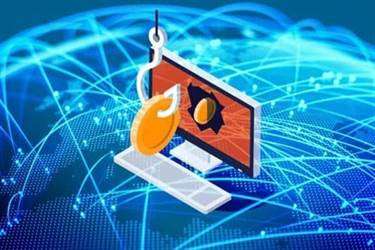Scrum: Definition, Scrum Process, Roles, Benefits and More
The two-to-four week sprints are shown by the larger green circle. Both of these end-of-sprint activities are consistent with the agile value of continuously improving. A team is cross-functional, meaning everyone is needed to take a feature from idea to implementation. Remember, though, that the parts that are there have been shown to work over and over again. Be very careful, therefore, about deciding to remove something, especially before you have sufficient experience to make very educated guesses about how removing something would affect the other parts.

These leaders have to foster an environment wherein a product owner, in collaboration with stakeholders, can order the work for complex problems into a backlog. The team, which consists of whomever is responsible for creating a product , turns the backlog into a collection of work within the time box of a s. The team and stakeholders then inspect the results and adjust for the next sprint. An iterative and incremental agile software development method for managing software projects and product or application development. Besides the main roles, scrum teams also involve stakeholders and managers. These players do not have any formal roles in the scrum and are involved in the process only infrequently.
The scrum development team
The decisions that are made, the steps taken, and the way Scrum is used should reinforce these values, not diminish or undermine them. The Scrum Team members learn and explore the values as they work with the Scrum events and artifacts. When these values are embodied by the Scrum Team what is SCRUM and the people they work with, the empirical Scrum pillars of transparency, inspection, and adaptation come to life building trust. Various processes, techniques and methods can be employed within the framework. Scrum wraps around existing practices or renders them unnecessary.

Optimally, all events are held at the same time and place to reduce complexity. The emergent process and work must be visible to those performing the work as well as those receiving the work. With Scrum, important decisions are based on the perceived state of its three formal artifacts.
Download the Product Owner Role Cheatsheet
This refers to everything that was completed during a Sprint, including all of the product backlog items, as well as everything that was developed in earlier Sprints. The product increment indicates how far the project has progressed. Scrum divides complex work into basic components, big organizations into small teams, and large projects into sprints. Companies can deliver the products and services that customers genuinely want faster and more efficiently by building iteratively and progressively.
- The fundamental unit of Scrum is a small team of people, a Scrum Team.
- While proven useful, these do not replace the importance of empiricism.
- Many refer to these methodological techniques as ‘patterns’—by analogy with design patterns in architecture and software.
- Scrum allows you to obtain and implement customer feedback at the end of each small development cycle, ensuring that your outcomes are influenced by actual users rather than assumptions.
- The Sprint Goal, the Product Backlog items selected for the Sprint, plus the plan for delivering them are together referred to as the Sprint Backlog.
- As a heuristic framework, scrum emphasizes continuous learning and improvement, allowing teams to adapt to changing circumstances.
Rugby teams will use a scrummage or scrum when something has happened to stop the game, for example, if the ball leaves the playing field (think jump-start in basketball). To restart the game, the players stand close together with their heads interlocked. In this formation, they move as one – when one person makes a step, all the others must take a step as well. Scrum is a team management strategy that increases the effectiveness of a team. It is used for projects that need to address complex problems and deliver high-value products. For developers working in the cloud, Sumo Logic’s cloud-native analytics platform provides real-time insight into the operational and security performance of your public or hybrid cloud environment.
Sprint planning
The product backlog is an ordered list of all the possible changes that could be made to the product. Items on the product backlog are options, not commitments in that just because they exist on the Product Backlog does not guarantee they will be delivered. At the end of the Sprint following the sprint review, the team should reflect upon how things went during the previous sprint and identify adjustments they could make going forward. The result of this retrospective is at least one action item included on the following Sprint’s Sprint Backlog.
The purpose of a sprint retrospective is to analyze the performance of the scrum team over the past sprint and identify any opportunities for improvement that could lead to better results in the future. The sprint review is one of the most formalized processes of the scrum framework. The purpose of the sprint review is to assess and update scrum artifacts and collaborate to determine the next steps. The iterative, incremental approach that characterizes scrum projects helps make projects more predictable and reduces the risk of project failure. Empirical process control relies on three qualities that form the three pillars of the scrum framework.
Learn
Scrum emphasizes a predictable, sustainable delivery rate as well as frequent feedback, allowing teams to manage risk early and often. Short sprints allow teams to fail quickly if an idea fails, lowering the chance of failure. An artifact is a historical interest that deserves to be investigated again.
The rest of the Product Backlog emerges to define “what” will fulfill the Product Goal. They are designed to maximize transparency of key information. Thus, everyone inspecting them has the same basis for adaptation. The Scrum Team identifies the most helpful changes to improve its effectiveness.
Examples of scrum
For instance, software projects include software engineers, architects, analysts, programmers, QA experts, UI designers and testers. Scrum masters act as a connection between the product owner and the team. Their main role is to remove any barriers that may prevent the team from achieving its goals. Scrum masters https://www.globalcloudteam.com/ help the team to remain productive and creative. Product owners communicate product vision to the development team and represent customer interests via prioritization and requirements. At the end of each sprint, the team produces a potentially shippable product increment — i.e. working, high-quality software.

The product owner is responsible for ensuring that expectations for the completed product are communicated and agreed upon. An introduction to kanban methodology for agile software development and its benefits for your agile team. Once the time period for a sprint is finalized, the stories or product backlog entries that can be implemented during this sprint cycle are then determined.
Support lean, cost-effective workflows focused on delivering
The whole Scrum Team then collaborates to define a Sprint Goal that communicates why the Sprint is valuable to stakeholders. The Sprint Goal must be finalized prior to the end of Sprint Planning. The Product Owner ensures that attendees are prepared to discuss the most important Product Backlog items and how they map to the Product Goal. The Scrum Team may also invite other people to attend Sprint Planning to provide advice.